Palo Duro Canyon State Park
- January 5, 2024
- 0 comment
Located within the captivating expanse of the Texas Panhandle, Palo Duro Canyon State Park emerges as a breathtaking sanctuary of natural wonder. Spanning an impressive 60 miles in length and plunging 800 feet deep, this second-largest canyon in the United States unveils a mesmerizing tapestry of multicolored rock layers and steep mesa walls, earning it the title of the “Grand Canyon of Texas.” Carved by the Prairie Dog Town Fork Red River, the canyon’s geological formations, including caves and hoodoos, tell the tale of millions of years of water erosion and a rich history dating back to the Permian and Triassic periods.
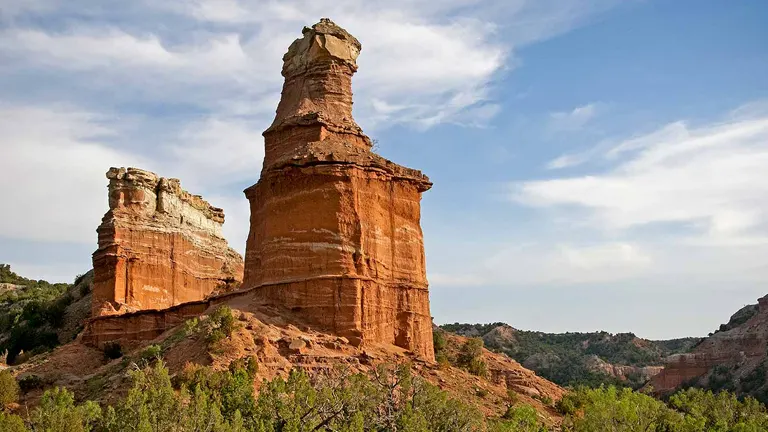
Boasting over 29,000 acres of diverse landscapes, the park not only serves as a haven for outdoor enthusiasts with its 16 trails for hiking, biking, and horseback riding but also stands as a testament to the enduring spirit of human habitation, with evidence of Native American presence dating back millennia. Palo Duro Canyon State Park, managed by the Texas Parks and Wildlife, invites visitors to explore its captivating vistas, delve into the pages of Earth’s ancient history, and immerse themselves in the beauty of one of Texas’ most cherished natural treasures.
Characterizing Features of the Palo Duro Canyon State Park
- Size and Depth: Palo Duro Canyon State Park is a sprawling natural wonder, extending over 29,000 acres in the Texas Panhandle. This second-largest canyon in the United States, stretching an impressive 60 miles in length and plunging to depths of 800 feet, offers visitors an expansive canvas of breathtaking landscapes. The sheer magnitude of the park provides ample opportunities for exploration and discovery.
- Geological Diversity: Renowned as the “Grand Canyon of Texas,” Palo Duro Canyon boasts a rich geological tapestry with rock formations dating back to the Permian and Triassic periods. The multicolored layers of rock, steep mesa walls, and distinctive formations like caves and hoodoos create a visually stunning environment. The canyon’s unique geological features provide a captivating glimpse into the Earth’s ancient past, adding a layer of educational intrigue to the park.
- Cultural Significance: Beyond its natural beauty, Palo Duro Canyon holds cultural significance with evidence of human habitation dating back 10,000–15,000 years. Explored by the Coronado expedition in 1541 and later settled by Native Americans, the canyon witnessed historical events such as the establishment of the JA Ranch in 1876. This cultural history adds depth to the visitor experience, offering a connection to the past amidst the scenic splendor.
- Outdoor Recreation: Palo Duro Canyon State Park is a haven for outdoor enthusiasts, providing 16 trails for hiking, biking, and horseback riding. Ranging from short, leisurely strolls to more challenging treks, these trails offer varying levels of adventure for visitors of all ages and fitness levels. The park’s extensive trail network ensures that visitors can explore the diverse landscapes and capture different perspectives of the canyon.
- Civilian Conservation Corps Contributions: The park’s infrastructure, including the iconic Pioneer Amphitheatre, was developed in the 1930s by the Civilian Conservation Corps (CCC). This historical context adds to the park’s allure, showcasing the dedication of the CCC in creating enduring structures that enhance the visitor experience. The Amphitheatre, in particular, serves as a venue for the annual outdoor historical and musical drama “Texas.”
- Camping and Accommodations: Palo Duro Canyon State Park offers diverse camping options, from tent sites to RV spaces. The park’s facilities cater to camping enthusiasts with amenities like picnic tables, public restrooms, and showers. Additionally, for those seeking a more comfortable stay, rustic cabins equipped with modern amenities are available for reservation, providing a unique experience amidst the canyon’s natural beauty.
- Cultural and Artistic Attractions: The Palo Duro Canyon Symphony No. 3 by Samuel Jones and the Canyon Gallery enrich the park’s cultural offerings. The Symphony, inspired by the canyon’s formation, complements the artistic endeavors housed in the Canyon Gallery. This convergence of nature and art adds a layer of cultural appreciation to the park, inviting visitors to immerse themselves in both the natural and artistic wonders of Palo Duro Canyon.
- Annual Outdoor Drama: Palo Duro Canyon hosts an annual outdoor historical and musical drama titled “Texas,” presented at the Pioneer Amphitheatre. Created by playwright Paul Eliot Green, this spectacle involves actors, singers, dancers, and artists from the Texas Panhandle region, making it the best-attended outdoor history drama in the nation. The drama, set against the stunning backdrop of the canyon, provides a unique cultural experience for visitors.
In essence, Palo Duro Canyon State Park combines geological marvels, cultural richness, outdoor adventure, and artistic expressions to create a multifaceted destination that appeals to a diverse range of interests.
History
Palo Duro Canyon State Park’s rich history traces back over millennia, beginning with evidence of human habitation dating back 10,000–15,000 years. The canyon, formed by the Prairie Dog Town Fork Red River, attracted Native Americans due to its abundant water supply, diverse game, edible plants, and natural protection. In 1541, members of the Coronado expedition became the first European explorers to discover the canyon. Over the years, it witnessed the ebb and flow of Native American tribes, including Apache Indians who were later displaced by Comanche and Kiowa tribes, benefitting from the introduction of horses by the Spanish.
The canyon gained prominence in the mid-19th century when United States military expeditions, including one led by Captain Randolph B. Marcy in 1852, mapped the area during their search for the headwaters of the Red River. Subsequently, in 1874, a military expedition led by Colonel Ranald S. Mackenzie played a pivotal role in removing Native Americans from reservations in Oklahoma after capturing their horses in the Battle of Palo Duro Canyon.
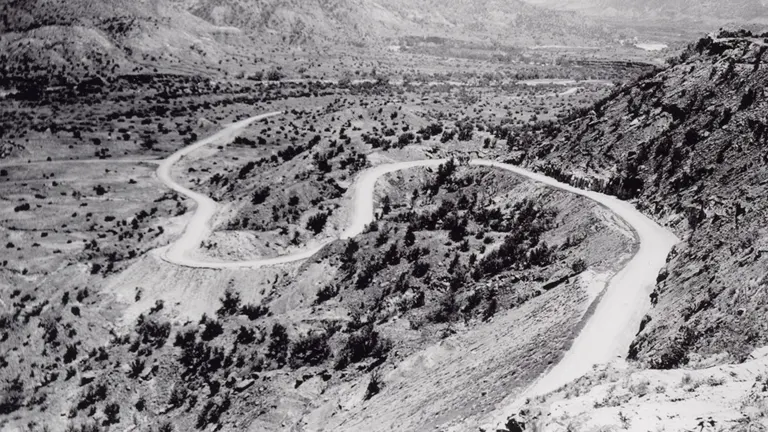
The late 19th century saw the establishment of the JA Ranch in 1876 by Charles Goodnight and John Adair. Over the next half-century, the canyon remained in private hands, becoming an increasingly popular tourist spot for local residents. Charles N. Gould, in 1905, made a significant contribution by creating a geologic map of the canyon and naming its formations.
The turning point for Palo Duro Canyon came in 1931 when a major landowner signed a contract allowing public access, leading to the acquisition of the upper section by the State of Texas in 1934. Four years later, in 1938, Palo Duro Canyon State Park officially opened to the public. The Civilian Conservation Corps (CCC) played a vital role during the park’s early development, contributing to the construction of Park Road 5, the Pioneer Amphitheatre, and various other facilities.
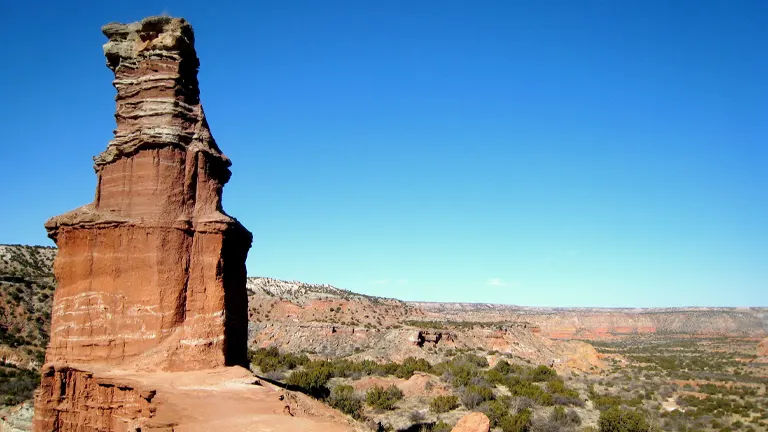
In 1976, Palo Duro Canyon State Park received national recognition when it was designated a National Natural Landmark by the National Park Service. Today, the park stands as a testament to the enduring efforts of preservation and conservation, offering visitors not only breathtaking landscapes and outdoor recreational opportunities but also a profound connection to the geological, cultural, and historical legacy embedded in the canyon’s storied past.
Importance in Conservation and Recreation of Palo Duro Canyon State Park
Palo Duro Canyon State Park holds profound importance in both conservation and recreation, embodying a harmonious blend of natural preservation and outdoor enjoyment. As a haven for biodiversity, the park safeguards a diverse array of flora and fauna within its 29,000-acre expanse, serving as a living testament to the region’s ecological richness. Conservation efforts are not only evident in the protection of unique geological formations but also in the preservation of critical habitats for numerous species. Beyond its ecological significance, the park plays a crucial role in providing recreational opportunities for the public.
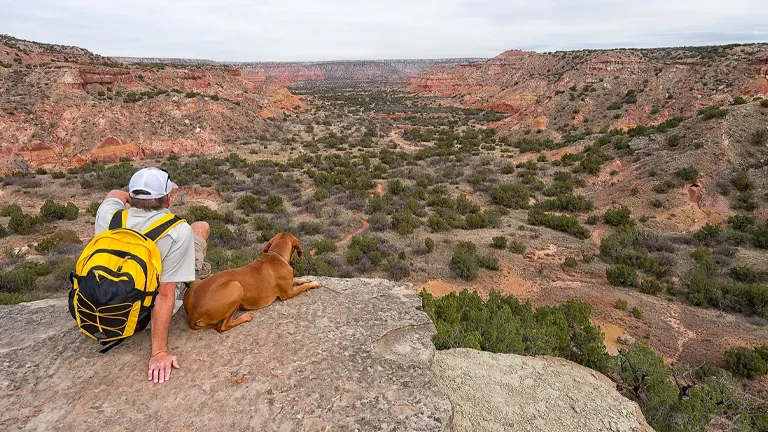
With an extensive network of 16 trails catering to hikers, bikers, and horseback riders, Palo Duro Canyon invites outdoor enthusiasts to explore its stunning landscapes and experience the thrill of adventure. The park’s commitment to conservation and recreation is further underscored by its facilities, ranging from campsites for nature lovers to rustic cabins for those seeking a more immersive stay. By striking a delicate balance between preserving the natural environment and offering a range of recreational activities, Palo Duro Canyon State Park stands as a model for sustainable land management, ensuring that future generations can continue to appreciate the beauty of this awe-inspiring natural wonder.
Unique Location of Palo Duro Canyon State Park
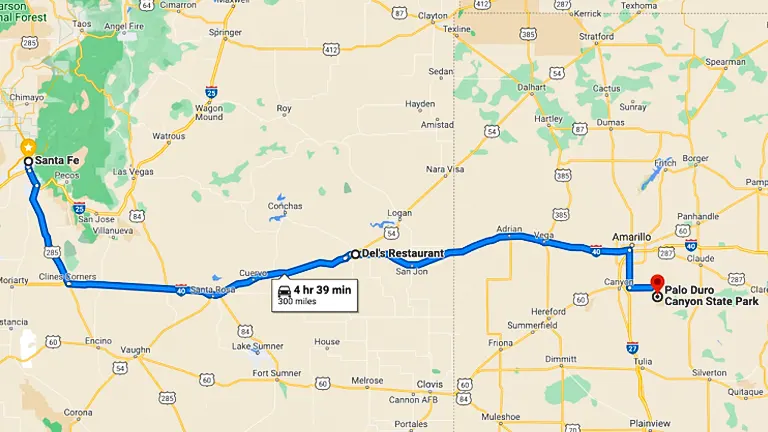
Located within the expansive canvas of the Texas Panhandle, Palo Duro Canyon State Park occupies a truly unique location that sets it apart as a geological masterpiece. Carved by the Prairie Dog Town Fork Red River, this awe-inspiring canyon spans an extraordinary 60 miles in length and delves to depths of 800 feet, making it the second-largest canyon in the United States. The park’s distinctiveness lies not only in its sheer size but also in its geological formations, showcasing multicolored layers of rock, steep mesa walls, caves, and hoodoos. Positioned near the cities of Amarillo and Canyon, Palo Duro Canyon stands as a testament to the dynamic forces of nature that have shaped this captivating landscape over millions of years. Its accessibility, merely 25 miles from downtown Amarillo and 14 miles from the town of Canyon, renders it a conveniently located natural wonder, beckoning visitors to explore its unique blend of geological wonders and cultural history in the heart of the Texas Panhandle.
Diverse Vegetation and Plant Species in Palo Duro Canyon State Park
- Juniper Trees (Juniperus): Thriving in the arid environment of Palo Duro Canyon, juniper trees contribute to the park’s unique vegetation. Their evergreen foliage provides shade and habitat for various wildlife. These hardy trees endure the canyon’s challenging conditions, adding to the park’s resilient plant community.
- Cottonwood Trees (Populus deltoides): Along the waterways of Palo Duro Canyon, cottonwood trees flourish, their broad leaves providing a lush contrast to the arid surroundings. These trees play a vital role in stabilizing the riparian ecosystem, offering shade and supporting a variety of bird species.
- Yucca Plants (Yucca): Exhibiting adaptability to the canyon’s dry climate, yucca plants grace the landscape with their striking, sword-like leaves. Known for their resilience, yuccas add a touch of desert aesthetics to the diverse flora, often attracting pollinators with their distinctive blooms.
- Prickly Pear Cacti (Opuntia): Embracing the sun-drenched slopes of Palo Duro Canyon, prickly pear cacti contribute to the park’s unique flora. Their paddle-shaped stems and vibrant blossoms showcase the ability of certain plant species to thrive in the canyon’s rocky and arid conditions.
- Sideoats Grama (Bouteloua curtipendula): Comprising the grassy expanses of the park, sideoats grama is a dominant grass species in Palo Duro Canyon. With its feathery seed heads and tolerance to drought, this native grass plays a crucial role in stabilizing the soil and providing forage for wildlife.
- Soapberry (Sapindus drummondii): Found in the canyon’s washes and along water sources, soapberry bushes contribute to the park’s plant diversity. These deciduous shrubs produce small, soap-like berries, serving as a food source for birds and wildlife while adding to the canyon’s ecological richness.
- Cholla Cacti (Cylindropuntia): Adding to the variety of cacti in Palo Duro Canyon, cholla cacti with their distinctive segmented stems thrive in the park’s sunlit and rocky areas. Their unique structure and colorful flowers enhance the visual allure of the canyon’s arid landscapes.
- Western Soapberry (Sapindus saponaria var. drummondii): Flourishing in the park’s diverse habitats, the western soapberry is notable for its soap-producing berries. Indigenous peoples historically used these berries for various purposes, emphasizing the plant’s cultural and historical significance in the canyon.
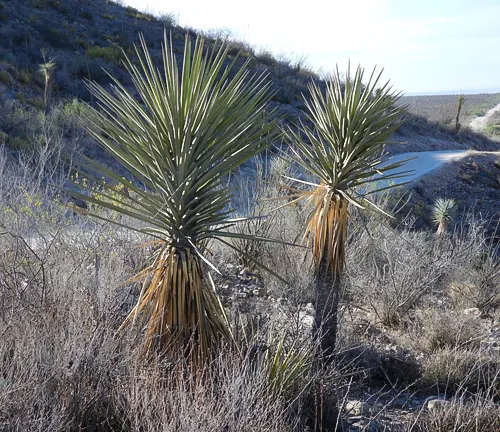
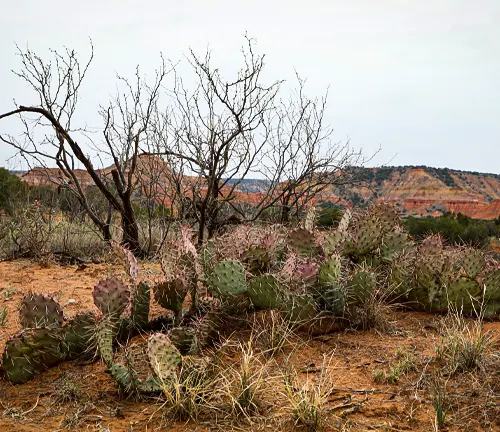
The diverse vegetation in Palo Duro Canyon State Park showcases the remarkable adaptability of plant life to the canyon’s challenging environment, contributing to the ecological richness and scenic beauty of this natural wonder.
Fauna
- White-Tailed Deer (Odocoileus virginianus): Graceful and commonly spotted in Palo Duro Canyon State Park, white-tailed deer find shelter in the park’s diverse vegetation. These herbivores are integral to the park’s ecosystem, contributing to seed dispersal and supporting the local predator population.
- Mule Deer (Odocoileus hemionus): Well-adapted to the canyon’s rocky terrain, mule deer roam the slopes and canyons of Palo Duro. Their distinctive large ears and keen senses aid in navigating the varied landscapes, making them a fascinating sight for park visitors.
- Bobcats (Lynx rufus): As elusive predators in the canyon, bobcats are part of Palo Duro’s carnivorous fauna. Their solitary nature and adaptability to diverse habitats make them an essential component of the park’s predator-prey dynamics.
- Coyotes (Canis latrans): With their distinctive yips echoing through the canyon at night, coyotes thrive in Palo Duro’s arid landscapes. As opportunistic omnivores, they play a crucial role in controlling small mammal populations and maintaining ecological balance.
- Collared Peccaries (Pecari tajacu): Known locally as javelinas, collared peccaries are social mammals often seen in groups within Palo Duro Canyon. Their foraging behavior contributes to seed dispersal and influences plant diversity in the park’s ecosystem.
- Rock Squirrels (Otospermophilus variegatus): Scaling the canyon walls and foraging in rocky outcrops, rock squirrels are well-adapted to Palo Duro’s rugged terrain. Their presence adds vibrancy to the park’s biodiversity, contributing to the rich tapestry of small mammal life.
- Texas Horned Lizards (Phrynosoma cornutum): Inhabitants of the canyon’s arid habitats, Texas horned lizards are well-camouflaged reptiles often found basking in the sun. Their unique appearance and insectivorous diet make them a distinctive and ecologically important species in the park.
- Golden Eagles (Aquila chrysaetos): As majestic birds of prey soaring over the canyon, golden eagles are part of Palo Duro’s avian diversity. Their presence indicates a healthy ecosystem, as they play a vital role in controlling rodent populations and maintaining ecological balance.
- Wild Turkeys (Meleagris gallopavo): Roaming the park’s woodlands and grassy areas, wild turkeys contribute to the avian diversity of Palo Duro Canyon. Their adaptability to varied habitats makes them a common and appreciated sight for birdwatchers and park visitors.
- Western Diamondback Rattlesnakes (Crotalus atrox): As part of the park’s reptilian fauna, western diamondback rattlesnakes are well-adapted to Palo Duro’s arid climate. Their presence emphasizes the diversity of the canyon’s wildlife, contributing to the intricate web of predator-prey relationships.

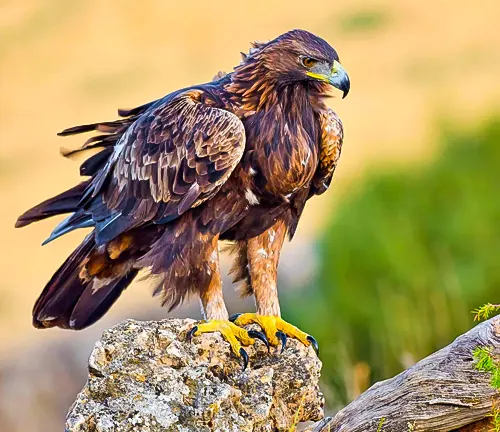
The fauna of Palo Duro Canyon State Park represents a captivating array of species adapted to the challenges of the canyon’s unique environment, creating a thriving and interconnected ecosystem for both wildlife enthusiasts and those seeking to appreciate the natural beauty of this Texas treasure.
Attractions in Palo Duro Canyon State Park
1. Pioneer Amphitheatre

The iconic Pioneer Amphitheatre stands as a cultural cornerstone within Palo Duro Canyon State Park. Constructed in the 1930s by the Civilian Conservation Corps, this outdoor venue hosts the annual musical drama “Texas.” A spectacular production that unfolds against the dramatic backdrop of the canyon, “Texas” brings to life the history, culture, and spirit of the Lone Star State. Attended by actors, singers, and artists from the Texas Panhandle region, the performance captivates audiences with its vibrant storytelling and celebrates the rich heritage of Texas.
2. Lighthouse Rock
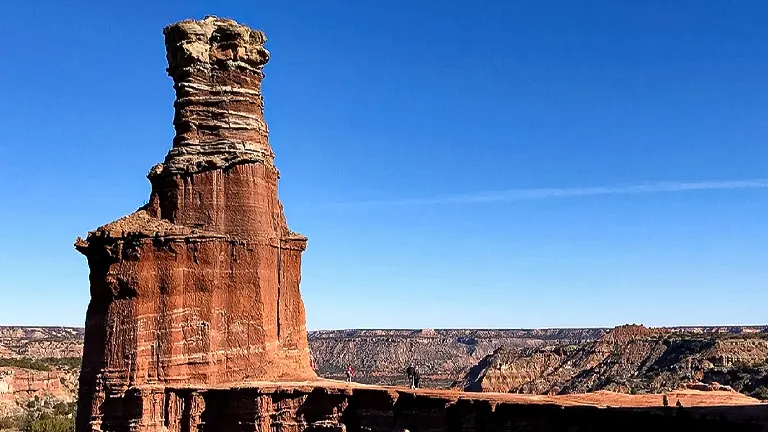
Lighthouse Rock, a major signature feature of Palo Duro Canyon, beckons adventurers with its striking formation. Accessible via a dedicated 6-mile round-trip loop trail, this natural wonder showcases the geological diversity of the canyon. Hiking to Lighthouse Rock offers not only panoramic views of the surrounding landscapes but also the opportunity to marvel at the intricate layers of rock that have been shaped by millennia of natural forces. It stands as a testament to the captivating beauty and geological history of Palo Duro Canyon.
3. Canyon Gallery
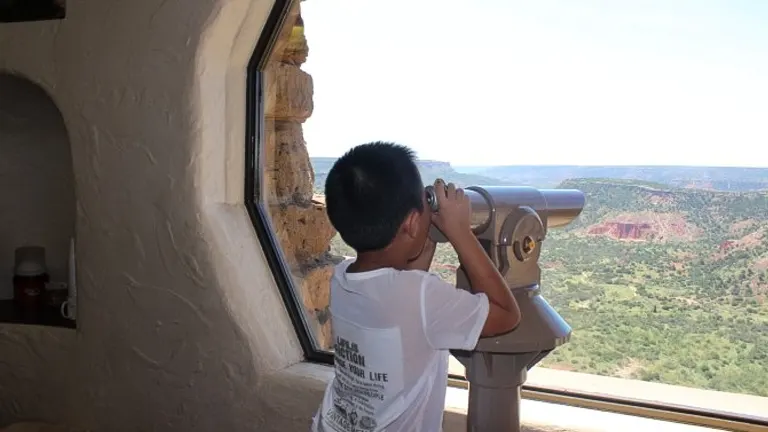
Operated by The Partners in Palo Duro Canyon Foundation, the Canyon Gallery is a captivating cultural attraction within the park. Perched near the top of the canyon, this stone-built gallery, constructed in 1933 by the Civilian Conservation Corps, offers visitors a panoramic view of Palo Duro’s splendor. Beyond its scenic location, the Canyon Gallery houses historical video productions, archeological exhibits, and a curated collection of Southwest art. Visitors can explore and purchase handmade Native American pottery, silver and turquoise jewelry, and a diverse selection of regional tools and crafts, enhancing the cultural experience within the park.
4. Texas Outdoor Musical Drama

The Texas Outdoor Musical Drama, performed at the Pioneer Amphitheatre, is a highlight of Palo Duro Canyon State Park’s cultural offerings. Created by playwright Paul Eliot Green, this annual production immerses audiences in the vibrant history of Texas. With its first performance in 1966, the drama has become a cherished tradition, earning the title of the best-attended outdoor history drama in the nation. The combination of captivating storytelling, live music, and a breathtaking natural backdrop makes the Texas Outdoor Musical Drama a must-see attraction for visitors seeking a unique cultural experience.
5. Cow Camp Cabins
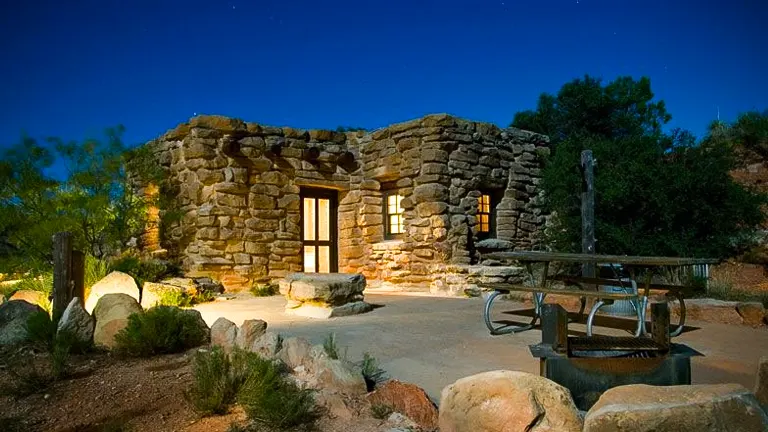
For those seeking a more immersive stay, the Cow Camp Cabins, built by the Civilian Conservation Corps in 1933, offer a rustic and historic lodging experience. Seven unique structures, three on the canyon rim and four on the canyon floor, provide visitors with an opportunity to stay within the park and experience its tranquility. Recently equipped with modern heating and cooling, these cabins allow guests to connect with the park’s rich history while enjoying the comforts of contemporary amenities.
6. Coronado Lodge

The Coronado Lodge, situated on the northwest rim of the canyon, offers a unique vantage point to take in the breathtaking views of Palo Duro. This historic lodge is surrounded by the thick deposits of caliche, showcasing the geological diversity of the canyon. Its strategic location and architectural charm make it an inviting destination for visitors to relax and appreciate the beauty of Palo Duro Canyon.
Palo Duro Canyon State Park’s attractions blend natural wonders with cultural experiences, creating a multifaceted destination that caters to a diverse range of interests. Whether enjoying a captivating outdoor drama, embarking on a scenic hike, or immersing oneself in the rich history of the canyon, visitors are sure to find an array of attractions that showcase the park’s unique allure.
Recreational Activities in the Palo Duro Canyon State Park
1. Hiking
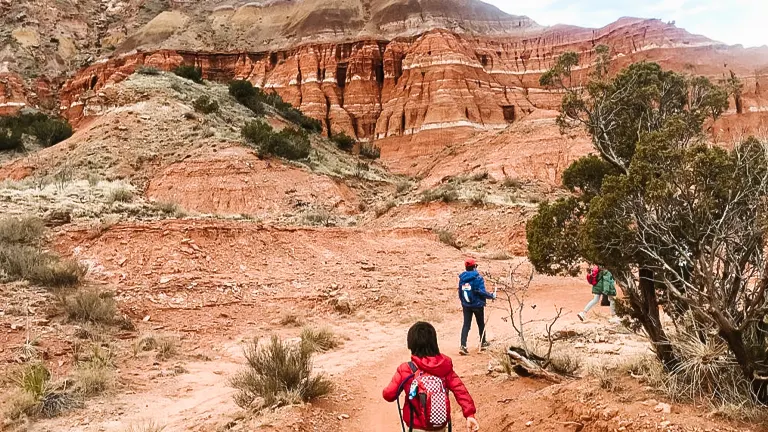
Palo Duro Canyon State Park offers a plethora of hiking trails, ranging from easy strolls suitable for families to challenging routes for avid hikers. The trails wind through diverse landscapes, providing opportunities to explore the canyon’s geological formations, witness vibrant flora and fauna, and enjoy panoramic views. The Givens, Spicer & Lowry Running Trail and the Capitol Peak Mountain Bike Trail are popular choices, offering varying levels of difficulty and showcasing the park’s natural beauty.
2. Mountain Biking

Enthusiastic mountain bikers find an exhilarating playground in Palo Duro Canyon with designated trails that traverse the rugged terrain. The Capitol Peak Mountain Bike Trail, known for its challenging paths and stunning vistas, is a favorite among biking enthusiasts. The park’s diverse topography ensures an adventurous and scenic ride, making it an ideal destination for those seeking an adrenaline-filled biking experience amid captivating landscapes.
3. Horseback Riding
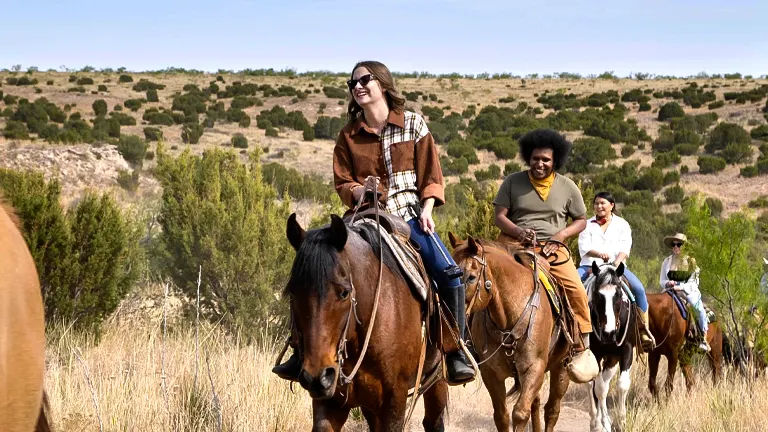
For a unique and leisurely exploration of the canyon, Palo Duro Canyon State Park provides equestrian trails catering to horseback riders. Riders can navigate through the park’s scenic beauty, immersing themselves in the serenity of the landscape. The availability of horse-friendly campsites adds to the allure, allowing visitors to extend their equestrian adventure within the park.
4. Camping
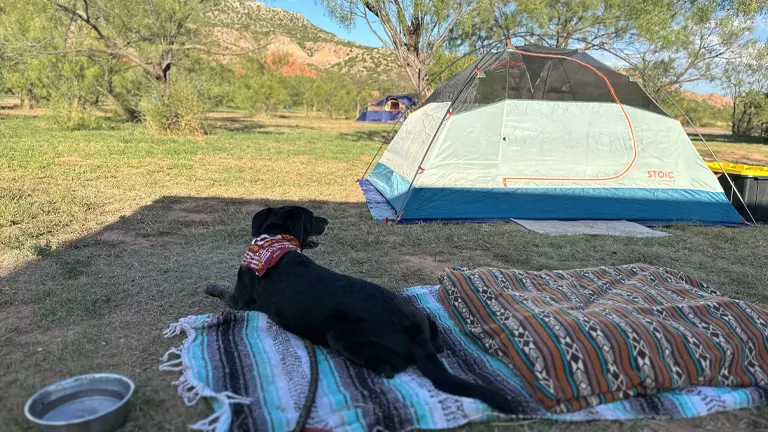
Camping enthusiasts can immerse themselves in the natural ambiance of Palo Duro Canyon by utilizing the park’s well-equipped campsites. Options range from tent camping sites with water access to spaces suitable for RVs, accommodating various preferences. Whether enjoying a night under the stars or waking up to the sunrise over the canyon, camping in Palo Duro offers a memorable outdoor experience.
5. Bird Watching

With its diverse habitats and abundant wildlife, Palo Duro Canyon State Park is a haven for birdwatchers. Over 250 bird species have been documented in the park, making it an excellent destination for birding enthusiasts. The varied landscapes, including riparian areas and rocky outcrops, attract a wide range of avian species, providing birdwatchers with ample opportunities to spot and identify different birds.
6. Photography

The breathtaking vistas and unique geological formations make Palo Duro Canyon a photographer’s paradise. The play of light on the multicolored rocks, the sweeping canyon landscapes, and the diverse flora and fauna offer endless opportunities for capturing stunning images. Photographers, amateur and professional alike, can explore the park’s trails and viewpoints to frame the beauty of Palo Duro through their lenses.
7. Stargazing

Palo Duro Canyon State Park, with its remote location and minimal light pollution, provides an exceptional setting for stargazing. Visitors can marvel at the expansive night sky, dotted with stars and celestial wonders. The park occasionally hosts stargazing events, offering guided sessions to enhance the astronomical experience and deepen the appreciation for the cosmic beauty above the canyon.
8. Group Retreats and Events
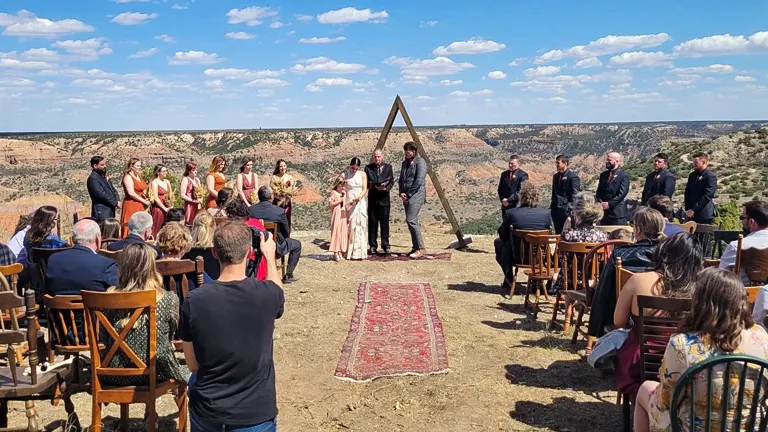
The park offers facilities and spaces for group retreats, youth gatherings, weddings, and other events. The Mack Dick Pavilion, with its scenic surroundings, serves as a popular location for weddings and receptions. Groups can enjoy the natural beauty of Palo Duro while engaging in organized activities or simply bonding amidst the tranquility of the canyon.
Palo Duro Canyon State Park’s recreational activities cater to a wide range of interests, ensuring that visitors can engage with the park in ways that resonate with their preferences, whether it’s an adrenaline-fueled adventure, a peaceful exploration of nature, or capturing the scenic beauty through various activities.
Facilities and Amenities in Palo Duro Canyon State Park
- Campsites: Palo Duro Canyon State Park offers a range of well-equipped campsites to cater to various preferences. From secluded tent sites with access to water sources to spacious RV sites, visitors can choose the ideal setting for their camping experience. With amenities such as fire pits and picnic tables, the campsites ensure a comfortable stay amid the breathtaking landscapes of Palo Duro Canyon.
- Visitor Center: Serving as the informational hub of the park, the Visitor Center is a valuable resource for visitors seeking guidance on trails, wildlife, and the geological wonders of Palo Duro Canyon. Knowledgeable park staff are available to assist, and the center houses educational displays, maps, and exhibits that provide insights into the park’s natural and cultural history.
- Picnic Areas: Scattered strategically throughout the park, picnic areas offer a serene setting for visitors to relax and enjoy a meal amidst the beauty of Palo Duro Canyon. Shaded tables provide a comfortable spot for picnickers to unwind, making these areas ideal for both day-trippers and campers looking for a picturesque dining experience.
- Restrooms and Showers: Palo Duro Canyon State Park ensures the convenience of visitors with well-maintained restroom facilities and showers. Accessible at key points within the park, these amenities cater to both day visitors and campers, providing a refreshing option to freshen up after a day of exploration or outdoor activities.
- Cabins: Historic cabins, constructed by the Civilian Conservation Corps in 1933, offer a unique lodging experience within the park. The Cow Camp Cabins, equipped with modern heating and cooling, allow guests to connect with the park’s rich history while enjoying a comfortable overnight stay. Scattered across the canyon rim and floor, these cabins provide an immersive and rustic retreat.
- Coronado Lodge: Overlooking the canyon from the northwest rim, the Coronado Lodge is a historic facility that enhances the visitor experience. Providing comfortable accommodations and stunning views, the lodge serves as a gathering place for relaxation and appreciation of Palo Duro’s grandeur. Its unique location and architectural charm make it an inviting destination within the park.
- Mack Dick Pavilion: The Mack Dick Pavilion stands as a versatile facility within Palo Duro Canyon State Park, offering space for group retreats, events, and weddings. Surrounded by the natural beauty of Palo Duro, the pavilion provides an idyllic setting for gatherings. Its popularity for weddings and receptions is heightened by the scenic backdrop, making it a sought-after venue within the park.
Palo Duro Canyon State Park ensures that visitors have access to a comprehensive array of amenities, blending modern comforts with the awe-inspiring natural beauty of the canyon. Whether camping under the stars, enjoying a picnic, or staying in historic cabins, guests can expect a well-rounded and enjoyable experience within this Texas gem.
Tips for Visiting Palo Duro Canyon State Park
- Plan Ahead: Before embarking on your trip to Palo Duro Canyon State Park, take the time to plan your visit. Check the park’s official website for updated information on trail conditions, weather forecasts, and any alerts or closures. Planning ahead ensures a smoother experience and helps you make the most of your time in the park.
- Explore Diverse Trails: Palo Duro Canyon boasts a variety of trails catering to different skill levels and preferences. Whether you’re an avid hiker, mountain biker, or horseback rider, there’s a trail for you. Research the trail options in advance, considering factors like difficulty, length, and scenic highlights, to choose the ones that align with your interests and fitness level.
- Bring Ample Water and Snacks: The West Texas climate can be arid, especially during the warmer months, so it’s crucial to stay hydrated. Bring an ample supply of water for your journey, and pack energy-boosting snacks to keep you fueled during your explorations. Having these essentials ensures that you can enjoy the trails comfortably and stay energized throughout your visit.
- Check for Events and Performances: Palo Duro Canyon State Park hosts various events and performances, including the renowned Texas Outdoor Musical Drama. Check the park’s event calendar to see if any activities align with your visit. Attending a live performance or participating in a park event can add a cultural and entertaining dimension to your experience in addition to exploring the natural wonders.
- Respect Wildlife and Plants: Palo Duro Canyon is home to diverse wildlife and plant species. While exploring, maintain a respectful distance from wildlife, and refrain from feeding or disturbing them. Stick to designated trails to minimize impact on vegetation and follow Leave No Trace principles to preserve the park’s ecological balance.
- Sun Protection and Appropriate Attire: The Texas sun can be intense, so it’s essential to protect yourself from sun exposure. Wear sunscreen, a hat, and sunglasses, and consider lightweight, breathable clothing. Additionally, sturdy and comfortable footwear is crucial for navigating the trails safely. Being adequately prepared ensures a more comfortable and enjoyable visit.
- Check for Camping Availability: If you plan to camp in Palo Duro Canyon State Park, check for campsite availability and make reservations in advance, especially during peak seasons. Whether you prefer tent camping or RV sites, securing your spot ensures a seamless camping experience and the opportunity to immerse yourself in the canyon’s natural beauty overnight.
- Mind the Weather: West Texas weather can be unpredictable, so stay informed about the forecast before your visit. Be prepared for temperature variations and, if needed, pack rain gear. Keeping an eye on the weather ensures that you can adjust your plans accordingly and stay comfortable during your time in the park.
By following these tips, visitors to Palo Duro Canyon State Park can make the most of their experience, ensuring a safe, enjoyable, and memorable exploration of this stunning natural wonder in Texas.
Recommendation
I strongly recommend exploring Palo Duro Canyon State Park for a captivating blend of natural beauty and historical significance. This park, renowned for its diverse landscapes, iconic landmarks, and recreational opportunities, offers a unique and immersive experience. Immerse yourself in reflective outdoor activities such as hiking and wildlife observation, actively contributing to ongoing conservation efforts. The scenic trails, historical sites, and collaborative conservation initiatives make Palo Duro Canyon State Park a central destination for those seeking a harmonious mix of nature and recreational exploration.
Conclusion
In conclusion, Palo Duro Canyon State Park stands as a true gem in the heart of the Texas Panhandle, offering a captivating tapestry of natural wonders, cultural history, and recreational possibilities. From the dramatic canyon landscapes, multicolored rock formations, and diverse flora and fauna to the rich historical tapestry woven by Native American inhabitants and European explorers, the park provides a multifaceted experience for all who venture into its depths. Whether hiking along its scenic trails, attending the iconic Texas Outdoor Musical Drama, or simply marveling at the breathtaking views, visitors are greeted with a sense of awe and appreciation. With its commitment to conservation, diverse amenities, and unique features like the Cow Camp Cabins and the Mack Dick Pavilion, Palo Duro Canyon State Park continues to be a destination where the beauty of nature converges with the spirit of adventure, leaving an indelible mark on all who seek its enchanting embrace.
FAQs
- What makes Palo Duro Canyon unique among other state parks in Texas?
Palo Duro Canyon is distinguished as the second-largest canyon in the United States, known for its vibrant geological formations, multicolored rock layers, and the title of “The Grand Canyon of Texas.” Its dramatic landscapes and cultural history set it apart, offering a one-of-a-kind experience. - Are there guided tours available to explore the canyon’s geological formations?
While the park does not offer guided tours, visitors can explore the canyon’s geological wonders through well-marked hiking, biking, and equestrian trails. Interpretive signs along the way provide insights into the formations, allowing for a self-guided educational experience. - What wildlife can be encountered within Palo Duro Canyon State Park?
The park is home to a variety of wildlife, including white-tailed deer, bobcats, wild turkeys, and numerous bird species. Visitors may also spot reptiles like lizards and snakes. It’s important to observe wildlife from a respectful distance to ensure both visitor safety and the well-being of the animals. - How can visitors experience the cultural history of Palo Duro Canyon?
Exploring the park’s historical sites, such as the Coronado Lodge and the Pioneer Amphitheatre, provides a glimpse into the cultural history of Palo Duro Canyon. Additionally, attending the Texas Outdoor Musical Drama, held at the Pioneer Amphitheatre, offers a captivating live performance that celebrates the region’s history. - Are there camping facilities available, and how can one make reservations?
Yes, Palo Duro Canyon State Park offers both tent and RV camping. Reservations can be made online through the official Texas Parks and Wildlife website. Due to the park’s popularity, especially during peak seasons, it’s advisable to book in advance to secure your preferred camping spot. - Can visitors bring their pets to Palo Duro Canyon State Park?
Yes, pets are welcome in the park but must be kept on a leash no longer than six feet at all times. Visitors are also encouraged to clean up after their pets to help maintain the park’s cleanliness and ensure a safe environment for both wildlife and fellow visitors. - What is the best time of year to visit Palo Duro Canyon?
The fall and spring months are considered ideal for visiting Palo Duro Canyon. The weather is generally mild, making outdoor activities more enjoyable. Additionally, these seasons showcase the vibrant colors of the canyon’s geological formations, creating a picturesque landscape. - Are there ranger-led educational programs for children and school groups?
Yes, Palo Duro Canyon State Park offers ranger-led educational programs tailored for children and school groups. These programs aim to provide an interactive and informative experience, teaching participants about the canyon’s geology, wildlife, and cultural history. Schools and groups can inquire about scheduling these programs through the park’s visitor center.
As we conclude our exploration of Palo Duro Canyon State Park, it’s evident that this natural wonder is more than just a geographical marvel it’s a testament to the diverse beauty Texas has to offer. From the captivating hues of the rock formations to the rich cultural history embedded in its landscapes, Palo Duro invites visitors to connect with nature and history uniquely and profoundly. Whether you’re a hiker seeking scenic trails or a history enthusiast exploring the remnants of the past, the park’s multifaceted charm ensures there’s something for everyone. As you bid adieu to this iconic canyon, carry with you the memories of panoramic views, starry nights, and the tranquility that only a place like Palo Duro can provide. Until next time, happy trails!


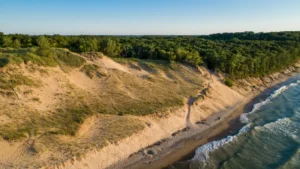
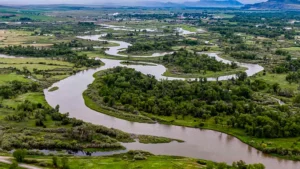
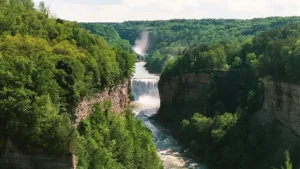
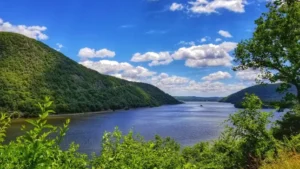
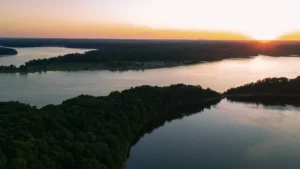

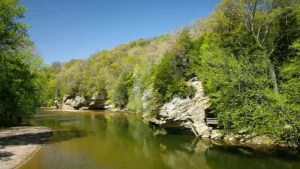
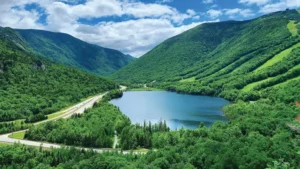




Leave your comment